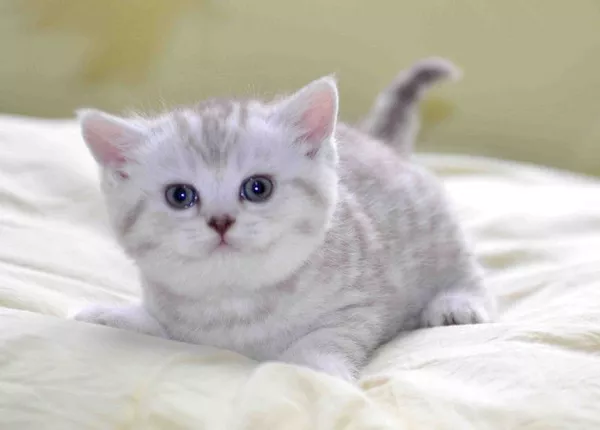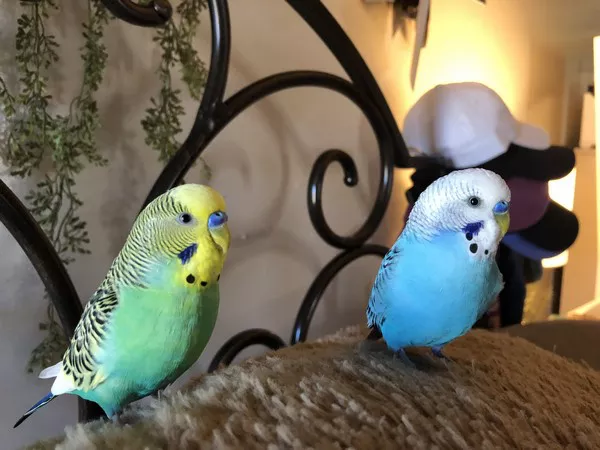The American Shorthair cat, with its distinctive appearance and amiable temperament, has become a favorite among cat enthusiasts worldwide. Renowned for their adaptability and sociable nature, American Shorthairs have secured a prominent place in households across the United States and beyond. However, what many may not realize is that within this beloved breed lies a captivating array of variations, each with its unique characteristics and lineage. In this comprehensive article, we delve into the fascinating world of American Shorthair cats, shedding light on the diverse types that exist and the factors contributing to their distinct traits.
Historical Roots: Tracing the Origins of the American Shorthair
To truly understand the diversity within the American Shorthair breed, it is essential to delve into its historical roots. The ancestors of these cats are believed to have arrived in North America with European settlers, serving as indispensable companions on long sea voyages to control rodent populations. Over time, these cats adapted to their new environment, interbreeding with other feline companions brought by different waves of immigrants.
The American Shorthair, as a distinct breed, started to take shape in the 20th century when cat enthusiasts began selectively breeding cats with desirable traits. The breed’s popularity soared, and with it came the emergence of various types, each distinguished by specific characteristics.
Classification Based on Coat Color and Pattern
One of the most noticeable aspects of the American Shorthair is its coat, which comes in a wide range of colors and patterns. These variations have led to the classification of different types within the breed based on coat characteristics.
Classic Tabby: The classic tabby pattern is perhaps the most iconic, characterized by bold, swirling patterns on the cat’s sides and a distinctive “M” shape on its forehead. This type often features a coat with contrasting colors, creating a visually striking appearance.
Mackerel Tabby: Mackerel tabbies showcase narrow, vertical stripes that resemble fish bones, hence the name “mackerel.” This pattern is known for its elegance and can be found in various color combinations.
Spotted: American Shorthairs with a spotted coat exhibit round or oval-shaped spots evenly distributed across their body. This type often gives the cat a playful and dynamic appearance, capturing the attention of admirers.
Solid Color: Some American Shorthairs boast a solid-colored coat, with no distinct patterns or markings. This type showcases the beauty of a single, rich color, emphasizing the cat’s overall form and structure.
Bi-Color: Bi-color American Shorthairs have a predominantly white coat with patches of another color, creating a charming contrast. This type adds an extra layer of visual appeal to the breed.
Genetic Variations and Influences on Coat Types
Understanding the genetic factors behind the diverse coat types within the American Shorthair breed is crucial. The Agouti gene, responsible for determining the distribution of pigments in each hair strand, plays a significant role in creating the various coat patterns observed in these cats.
Additionally, the presence or absence of certain genes, such as the Tabby gene, influences the manifestation of specific patterns like classic tabby, mackerel tabby, and spotted coats. Breeders carefully consider these genetic factors when planning matings to achieve desired coat types and maintain the breed’s overall health.
Variability in Eye Color: A Window to Genetic Diversity
Beyond their striking coats, American Shorthair cats are known for their captivating eyes, which come in an array of colors. The breed standard acknowledges a variety of eye colors, including gold, copper, hazel, and green. Blue eyes are also observed in some cats, particularly those with pointed coat patterns.
The inheritance of eye color is a complex trait influenced by multiple genes. While some coat colors are associated with specific eye colors, there is still a degree of variability within each category. The interplay of genetics in determining eye color adds another layer of diversity to the American Shorthair breed.
Body Structure and Size: Exploring the Physical Diversity
In addition to coat variations, American Shorthairs exhibit diversity in their body structure and size. The breed standard outlines certain characteristics that define the ideal American Shorthair physique, but within these guidelines, there is room for individual differences.
Muscular Build: American Shorthairs are known for their muscular and well-balanced build. The breed standard emphasizes a solid, medium to large body with a robust bone structure. However, within this framework, some cats may have a more pronounced musculature, giving them a particularly athletic appearance.
Facial Features: The breed is characterized by a broad, open face with high cheekbones and a well-defined jaw. The eyes are large and expressive, contributing to the cat’s friendly and approachable demeanor. Variations in facial features can give individual cats a unique charm, even within the confines of the breed standard.
Size: American Shorthairs typically fall into the medium to large size category. However, there can be variations in size, with some cats trending towards the larger end of the spectrum and others towards the smaller side. Factors such as genetics, diet, and overall health contribute to the variability in size observed within the breed.
Coat Length: Beyond the Shorthair Stereotype
While the breed’s name suggests a uniform short coat, American Shorthairs can actually exhibit variations in coat length. The traditional short coat remains the most common, but some cats may have a slightly longer coat, often referred to as a “medium” length.
The presence of a longer coat does not categorize these cats as a separate type but adds to the individuality within the breed. Breeders carefully consider coat length when planning matings to maintain the overall appearance and grooming requirements associated with American Shorthairs.
Specialized Types: Recognizing Subcategories within the Breed
Within the broader classification of American Shorthairs, there are specialized types that have gained recognition for specific traits or unique characteristics. These types often result from intentional breeding practices aimed at preserving certain features.
Silver Shaded American Shorthair: Recognized for its stunning silver-tipped fur, the Silver Shaded American Shorthair has a coat that appears almost sparkling in the light. This specialized type showcases the breed’s adaptability to variations in coat color while maintaining the distinct American Shorthair characteristics.
Cameo American Shorthair: The Cameo American Shorthair is distinguished by its warm, apricot-hued coat with darker shading on the back and along the tail. This type exemplifies the breed’s versatility in expressing a wide range of colors while adhering to the overall breed standard.
See Also:British Shorthair Cats and Their Captivating Colors
Smoke American Shorthair: The Smoke American Shorthair features a solid color at the roots of the fur, gradually transitioning to a lighter shade towards the tips. This unique coat pattern creates a smoky, ethereal appearance, setting this type apart from the more traditional variations within the breed.
Health Considerations: Nurturing the Well-Being of American Shorthairs
While the focus on the diverse types of American Shorthairs is captivating, it is essential to underscore the importance of maintaining the breed’s overall health. Responsible breeding practices, regular veterinary care, and a well-balanced diet contribute to the longevity and well-being of these beloved cats.
Genetic diversity within the breed is crucial to avoid the negative effects of inbreeding, which can lead to health issues. Breeders must prioritize the health and genetic soundness of their breeding pairs to produce robust and resilient kittens.
Common health considerations for American Shorthairs include dental care, as these cats may be prone to dental issues, and weight management, given their hearty appetite. Regular veterinary check-ups help identify and address any potential health concerns, ensuring a happy and healthy life for these feline companions.
Conclusion: Celebrating the Rich Tapestry of American Shorthair Diversity
In conclusion, the American Shorthair breed stands as a testament to the beauty of feline diversity. From the classic tabby patterns to the specialized types like Silver Shaded and Cameo, each cat within this breed contributes to a rich tapestry of colors, patterns, and personalities.
Understanding the various types of American Shorthairs goes beyond mere appreciation for aesthetic differences; it provides insight into the breed’s adaptability and resilience over centuries. As guardians of these remarkable feline companions, it is our responsibility to celebrate their diversity while ensuring their continued well-being through informed breeding practices and attentive care.
In embracing the multifaceted world of American Shorthair cats, we not only honor their historical legacy but also pave the way for a future where these beloved feline friends continue to bring joy and companionship to households around the globe.
Related Topics:
How Much Do British Shorthairs Shed: A Comprehensive Guide
Budgeting for a British Shorthair Cat
Cost of British Shorthair Cats in the Philippines
























